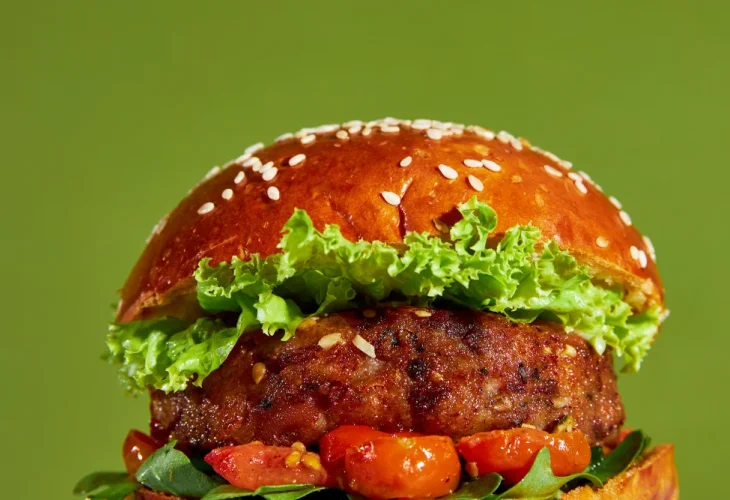Health and Nutrition
Top Natural Meat Substitutes: The Healthiest Alternatives for Protein and Nutrition
Discover the best plant-based foods to replace meat without sacrificing nutrients or flavor
 In the photo: A plant-based burger
In the photo: A plant-based burgerWhether you're vegan, vegetarian, or just trying to cut down on meat, you're likely looking for the healthiest substitute for meat. While there's no one-size-fits-all answer, as it depends on individual needs, there are several natural, accessible, and nutritious alternatives that can provide high-quality protein, iron, and essential nutrients – all without cholesterol, saturated fat, or guilt.
Legumes
Lentils, chickpeas, beans, soybeans, and black-eyed peas are excellent meat alternatives when it comes to protein, fiber, and iron. Most legumes are affordable, filling, easy to cook, and work well in soups, stews, spreads, and veggie patties.
Why are they recommended?
Unlike meat, legumes contain no cholesterol, offer healthy fats, and help regulate blood sugar and blood pressure. Their high fiber content also promotes digestive health.
How to use them:
Try lentil stew with vegetables, baked bean patties, homemade hummus, or a vegetarian burger made with chickpeas and oats.
Tofu and Tempeh
Tofu, made from soy, is a great meat substitute, especially when well-seasoned. Tempeh, a fermented soy product, is even more nutritious with higher levels of protein and iron.
Why are they recommended?
Both are rich in complete protein, calcium, and iron. Tempeh also contains natural probiotics that improve gut health.
How to use them:
Sauté tofu with vegetables, enjoy crispy tempeh in soy sauce, or add tofu/tempeh cubes to an Asian-inspired stir-fry. These are excellent options even for non-vegans.
Quinoa
Though not a "classic" meat substitute, quinoa is surprisingly effective. It contains all essential amino acids, iron, magnesium, and fiber.
Why is it recommended?
Quinoa is ideal for those who have difficulty digesting legumes and can be incorporated into light and healthy meals.
How to use it:
Cook quinoa with vegetables, make a hearty quinoa salad, or bake quinoa veggie balls in the oven.
Seitan
Seitan is made from gluten (wheat protein) and is one of the closest meat alternatives in both texture and taste.
Why is it controversial?
Although high in protein, it's unsuitable for those with gluten sensitivity or digestive issues. It's best consumed occasionally rather than daily.
What's the healthiest option?
There’s no single winner, legumes come out on top for being the most accessible, nutritious, and versatile. When combined with whole grains (like brown rice or quinoa), they provide a complete protein and cover all essential nutritional needs.

